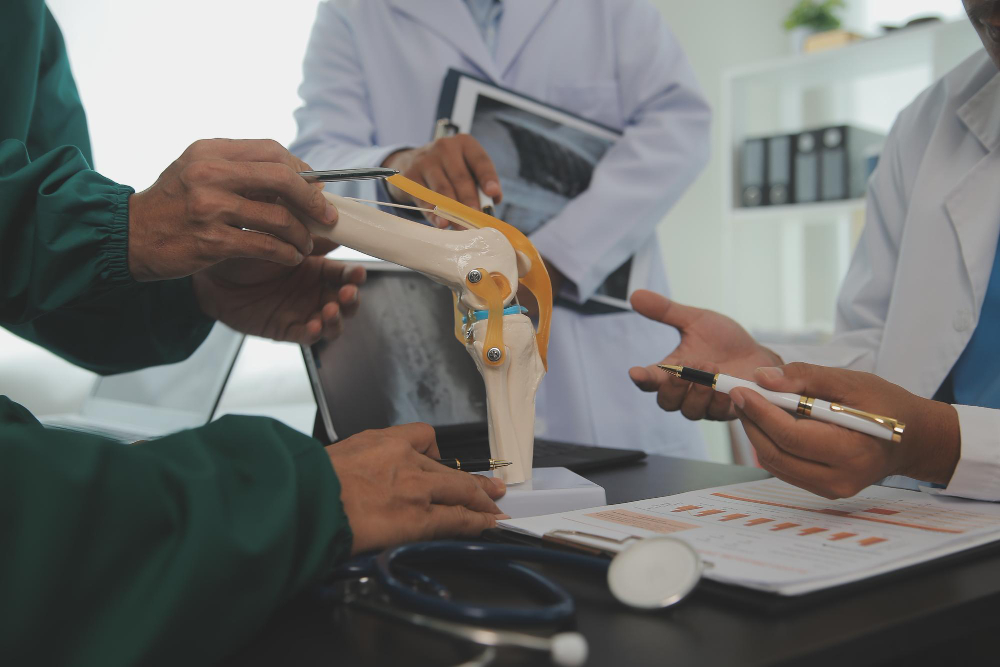Introduction to Total Knee Replacement
Total knee replacement is a surgery that helps people with severe knee pain. Doctors remove damaged parts of the knee and replace them with artificial parts. This procedure can help you walk better and reduce pain. Many people choose total knee replacement when other treatments do not work. Often, this surgery gives people a new chance to enjoy daily activities.
Common Symptoms and Conditions Leading to Knee Replacement
Many people feel knee pain that does not go away. Sometimes, the knee becomes stiff or swollen. You may also have trouble walking or climbing stairs. These symptoms often come from:
When these problems make daily life hard, total knee replacement may be needed.
Causes and Risk Factors for Needing Surgery
Many factors can lead to knee damage. For example, aging is a common cause. Over time, the knee joint wears out. In addition, being overweight puts extra stress on the knees. Some people have a family history of joint problems. Injuries from sports or accidents can also damage the knee. If you have arthritis, your risk is higher. Smoking and lack of exercise may also increase your risk.
How Total Knee Replacement Is Diagnosed and When It Is Recommended
Doctors use several steps to decide if you need total knee replacement. First, they ask about your symptoms and medical history. Next, they check your knee for swelling, movement, and pain. X-rays or MRI scans show the damage inside the knee. If pain and stiffness do not improve with medicine or therapy, surgery may be recommended. Usually, doctors suggest total knee replacement when other treatments fail.
Step-by-Step Overview of the Knee Replacement Procedure
Understanding the knee replacement procedure can ease your worries. Here is what usually happens:
The surgery often takes one to two hours. Afterward, you move to a recovery room.
Benefits and Expected Outcomes
Total knee replacement offers many benefits. For instance, most people feel less pain after healing. You may find it easier to walk and do daily tasks. Many people return to hobbies they once enjoyed. In addition, the new knee joint can last for many years. Studies show that over 90% of knee replacements work well for at least 15 years. However, results may vary for each person.
Recovery Process and Rehabilitation Tips
Recovery is an important part of knee replacement. At first, you may need to stay in the hospital for a few days. Physical therapy starts soon after surgery. This helps you regain strength and movement. Here are some tips for a smooth recovery:
Most people can walk with help within a few days. Full recovery may take several weeks to months. But with effort, you can return to many normal activities.
Lifestyle Guidance After Surgery
After total knee replacement, you can enjoy a more active life. However, you should take some precautions. For example, avoid high-impact sports like running or jumping. Instead, choose gentle activities such as walking, swimming, or cycling. Eating a healthy diet helps your body heal. Also, keep your weight in a healthy range to protect your new knee. Always follow your doctor’s advice about activity and care.
Prevention of Complications and Long-Term Care
Taking care of your new knee is important. To prevent problems, you should:
With good care, your knee replacement can last many years.
Frequently Asked Questions
Conclusion
Total knee replacement can give you a new start. It helps reduce pain and improve movement. If you have questions or think you may need this surgery, consult a specialist for personalized guidance on total knee replacement.

